Triangle Magellan Duetto 40th Anniversary Speaker
A Master Class in Midrange
In the autumn of 1973, I walked into an audio store in Baton Rouge, Louisiana, intending to buy an album. As I entered the store, I could hear James Taylor's music playing from a pair of Rogers LS3/5A loudspeakers. At that time, I owned a Marantz 1060 and AR 3a loudspeakers that I had used during my college days in Boulder, Colorado. I was instantly captivated by the sound that day, and this singular moment initiated me on a lifelong pursuit to experience those fleeting "musical moments" and search for even better ones.
Yes, I had become as hooked on sound as one could be to any substance. So, I picked up two coconuts and embarked on my search for the Holy Grail. (If you know, you know.) I managed that same store for the following thirty years, living through the heyday of the "birth" of high-end audio, and what a ride it continues to be.
I am sharing this story because it was a bookshelf loudspeaker that was responsible for igniting my lifelong interest and subsequent career in audio. Even though I currently use a full-range speaker, I can certainly understand and appreciate the impact a special bookshelf speaker can have on someone and the lessons it can teach.
Enter the Triangle Magellan Duetto 40th Anniversary loudspeaker, the subject of this review.
TRIANGLE SPEAKERS
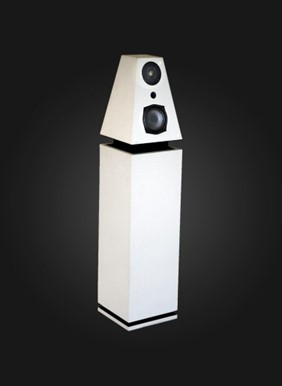 Triangle Model 1180 launched in 1980.....Five years before a similar concept…the WATT/ Puppy in 1985
Triangle Model 1180 launched in 1980.....Five years before a similar concept…the WATT/ Puppy in 1985
Triangle Speakers has a notable presence in over 40 countries globally, with France being its biggest market. While it may not be the most well-known French brand among US audio enthusiasts, it has a rich history. Triangle has developed a solid reputation in the audio industry for creating speakers with musical accuracy and emotional engagement, rivaling other brands such as Cabasse, Focal, and Devialet.
Renaud de Vergnette founded Triangle in Soissons, France, in 1980, and the company has been showcasing its passion for sound reproduction devices for over 40 years. Its first product was the Model 1180 shown above, and over the years, it has been at the forefront of some speaker designs we take for granted today.
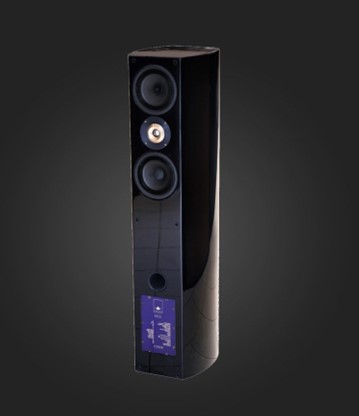 Triangle Altair
Triangle Altair
In 1990, Triangle introduced the Altair, one of the first loudspeaker designs with curved sides, a cabinet construction ahead of its time, that has become quite commonplace in the industry nowadays.
In 2003, the company launched its flagship Magellan loudspeaker line, which incorporated new technologies that have since been utilized in other products. Despite changing trends, they have consistently used horn-style tweeters and have remained true to their design philosophy over their history.
The Decelle family, led by Olivier Decelle, acquired Triangle in 2006 and took immediate steps to restructure the business. By 2009, Triangle had established dedicated research and development facilities segregated into mechanical and acoustic departments.
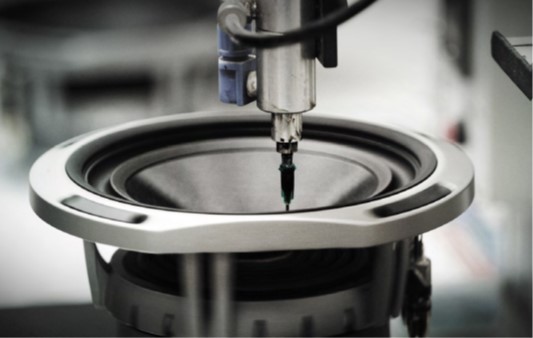 Triangle was an early adopter of 3D printer technology to create prototypes for their speakers, which sped up the design and development process of speaker models. Additionally, the company invested heavily in the German-designed Klippel measurement system and associated equipment to produce highly accurate drivers. They also established a specialized testing chamber to ensure precise measurements.
Triangle was an early adopter of 3D printer technology to create prototypes for their speakers, which sped up the design and development process of speaker models. Additionally, the company invested heavily in the German-designed Klippel measurement system and associated equipment to produce highly accurate drivers. They also established a specialized testing chamber to ensure precise measurements.
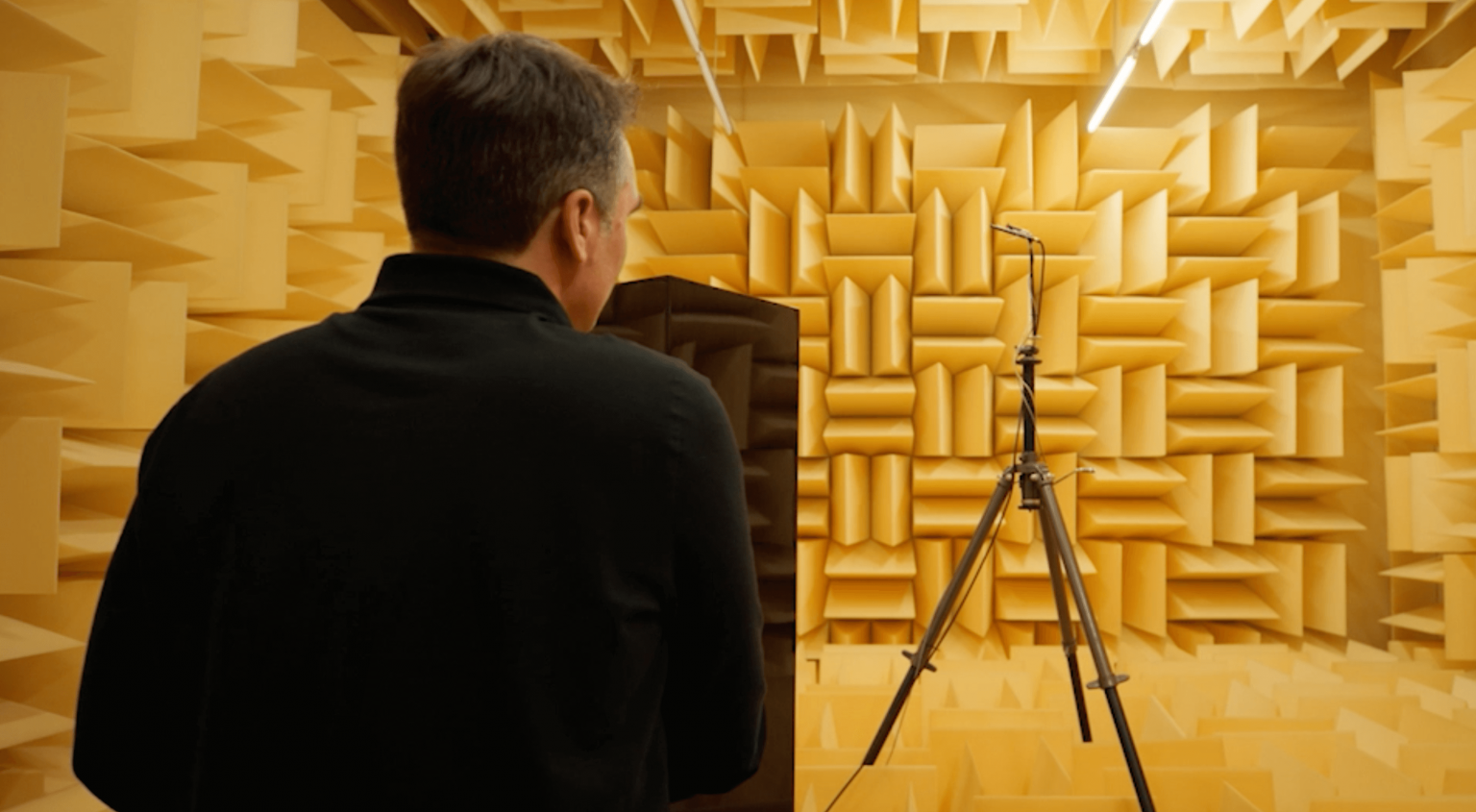 In 2015, industry veteran Frank Gazzo, who previously imported Plinius, suggested that Triangle France establish their own distribution network in the United States. Subsequently, Triangle set up the Antal Audio Group with offices and warehouses in Glens Falls, New York. Two years later, in 2017, Frank was appointed as the National Sales Manager. Since then, Antal Audio Group has expanded to include other brands such as Electrocompaniet Electronics from Norway and Soulines turntables from Serbia.
In 2015, industry veteran Frank Gazzo, who previously imported Plinius, suggested that Triangle France establish their own distribution network in the United States. Subsequently, Triangle set up the Antal Audio Group with offices and warehouses in Glens Falls, New York. Two years later, in 2017, Frank was appointed as the National Sales Manager. Since then, Antal Audio Group has expanded to include other brands such as Electrocompaniet Electronics from Norway and Soulines turntables from Serbia.
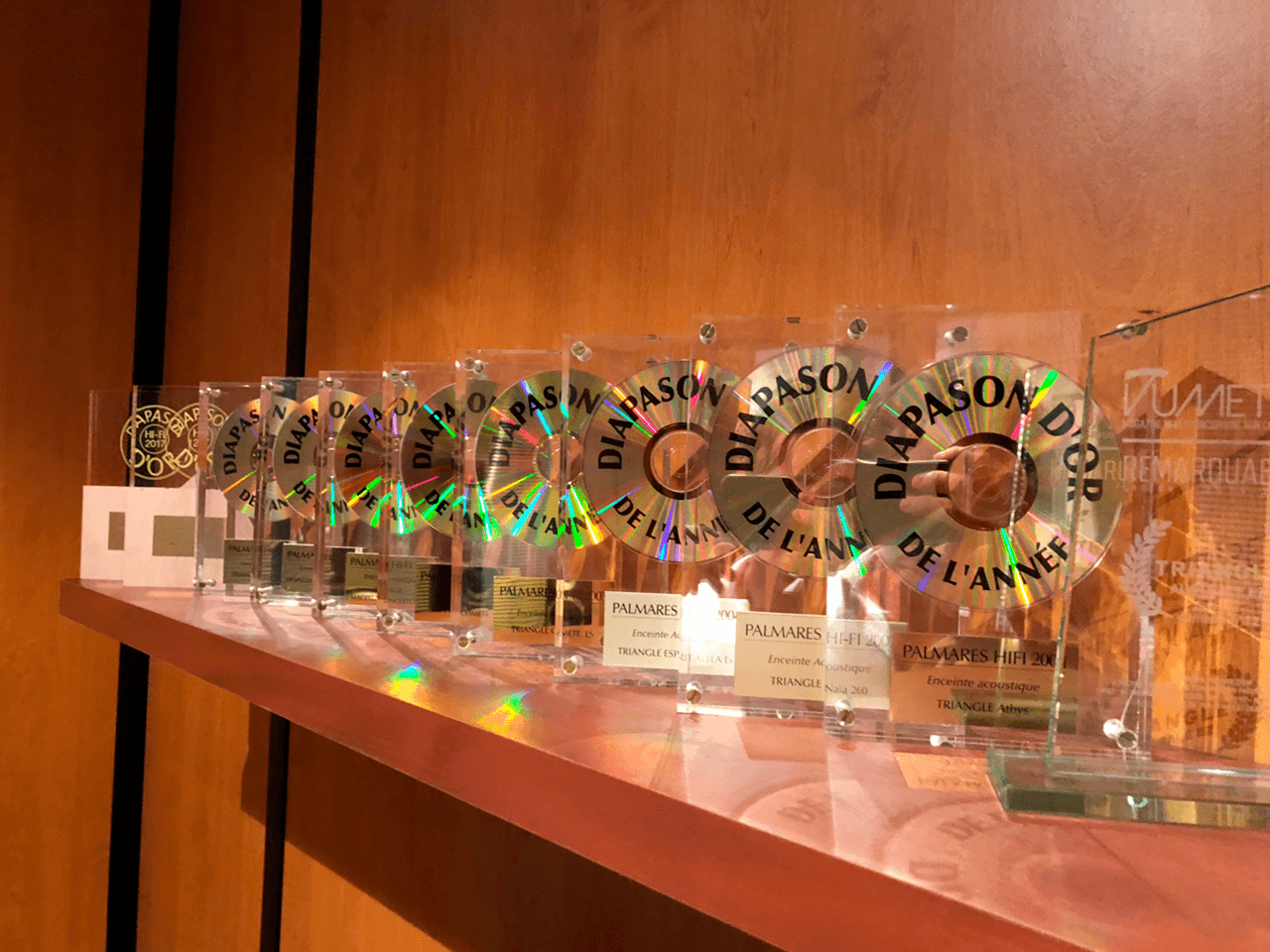 Worldwide Recognition
Worldwide Recognition
Triangle has received over 100 awards in 40+ years, including 21 Gold Diapasons, an award given for uncompromising sound reproduction quality that captures music's emotion and beauty.
The company currently offers a full range of products, including wireless-powered speakers and home audio speakers. Prices range from $529.00 per pair to $20,000 per pair.
I believe it's important to share the background of Triangle's success, which spans over 40 years, as it is a testament to the company's innovation, consistency, and drive to explore new designs and technologies. You don't stay in business for over four decades unless you are doing something right.
40th Anniversary Speakers
The design team celebrated their 40th anniversary by setting a challenge for itself. It aimed to preserve its legacy while exploring innovations to take the speakers to greater heights. To that end, the team developed advanced technologies for their 40th Anniversary speaker series, carefully evaluating every aspect of the speakers and improving them wherever possible, including introducing a new magnesium dome tweeter, a cellulose pulp midrange, and a new cone composition for the bass driver.
 Triangle Duetto
Triangle Duetto
The top-line Magellan Series ranges from $7,000/pr for the Duetto 40th to $20,000/pr for the flagship Quatour 40th. All drivers used in the Magellan, Signature, and 40th Antal & Cometes speakers are designed, manufactured, and assembled in-house at Triangle's production facility in France.
I'm impressed with the speaker's overall aesthetic design and craftsmanship, which in these areas can easily compete with the best models out there. The S08 speaker stand, specifically designed for this model, is shown above and is available as an optional add-on for $1200. The speaker's dimensions are 9.9 inches in width, 13.7 inches in depth, and 18.1 inches in height. It weighs 37 lbs.
Let's Assemble It
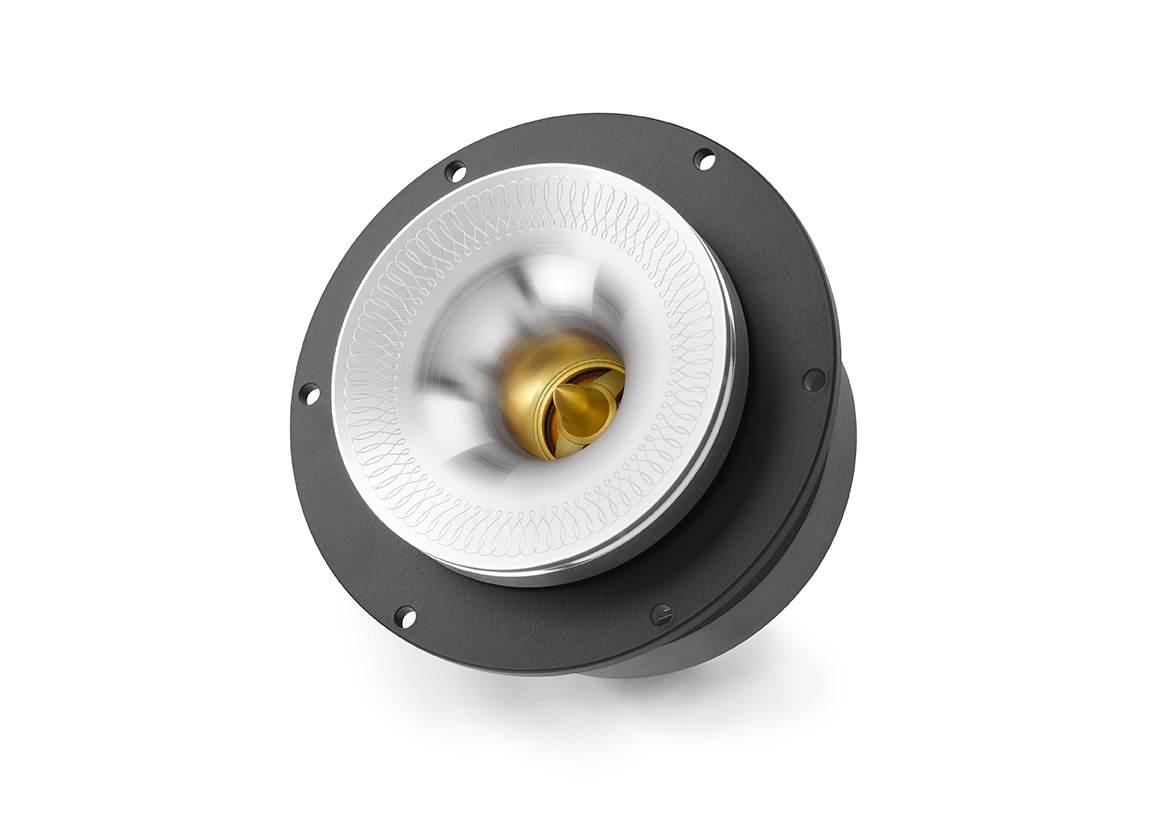
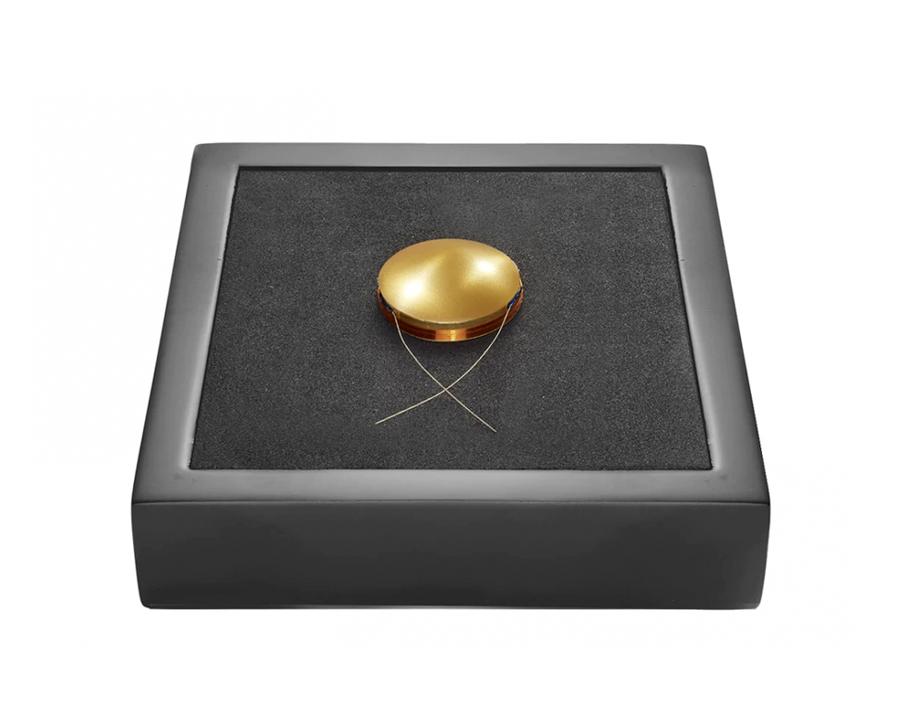 Tweeter
Tweeter
In the 40th-anniversary edition, the TZ2900PM-MG tweeter now features a next-generation magnesium alloy dome that improves linearity and consistency. The tweeter horn body, made of 100% aluminum using in-house CNC capabilities, reduces directivity and off-axis drop in high-frequency levels. It is paired with a phase plug to achieve this, which helps linearize the frequency response. Furthermore, a counter-cap has been incorporated into the motor to reduce reflections of rear waves, limit distortion, and control the upper end of the sound spectrum. Overall, this tweeter provided an accurate, smooth, and fluid musical quality, highlighting my listening sessions fine details and upper harmonics.
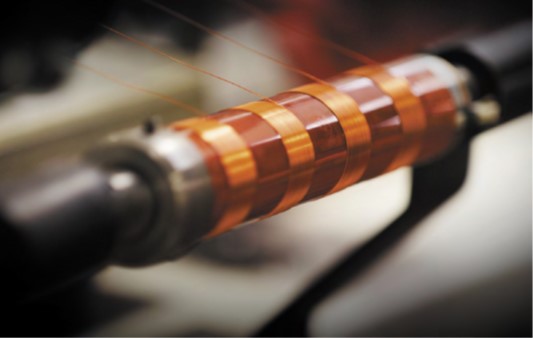 Midrange/Bass Driver
Midrange/Bass Driver
The midrange/bass driver uses a cellulose pulp cone and a progressive rubber surround. This design aims to eliminate any audible disturbance at the cone attachment level. The designers tried many different materials and concluded that the cellulose pulp cone produced the most faithful sound reproduction for the crucial midrange region.
The cone accommodates an ultra-light polypropylene dust cap with a phase plug shape, covered with shock-absorbing latex that limits swirling effects at the center of the cone and end-of-band irregularities. The heavy-cast aluminum frame supports a powerful magnet/motor and a precisely matched voice coil, allowing the driver to deliver firm and dynamic bass frequencies while maintaining clarity and finesse in the vocal register.
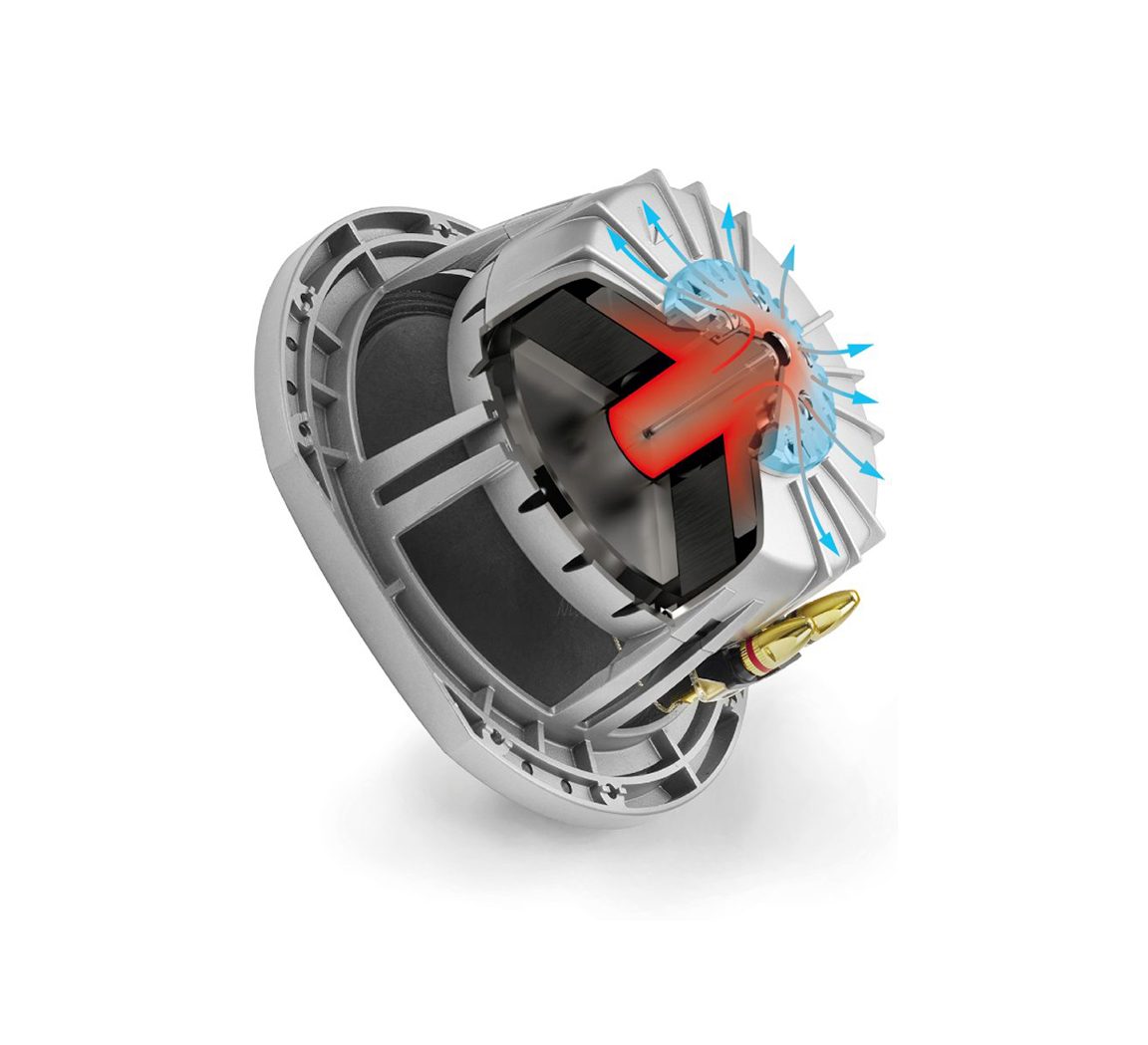 LHS2 Heat Sink System
LHS2 Heat Sink System
The Magellan 40th anniversary edition speakers employ a proprietary cooling system called LHS2. It incorporates a heat sink covered by a heat transmission ring at the back of the motor, which optimizes thermal transmission and captures heat generated in the driver's core and then evacuates it to the outer cover. As a result, the power handling capacity of each speaker can exceed 200 W RMS. Triangle's testing has found that with a 100-watt pink noise signal high-pass filtered at 80Hz for over 120 minutes, the heat sink system reduces temperature by approximately 20° improving the speaker's performance and minimizing the impact of thermal compression.
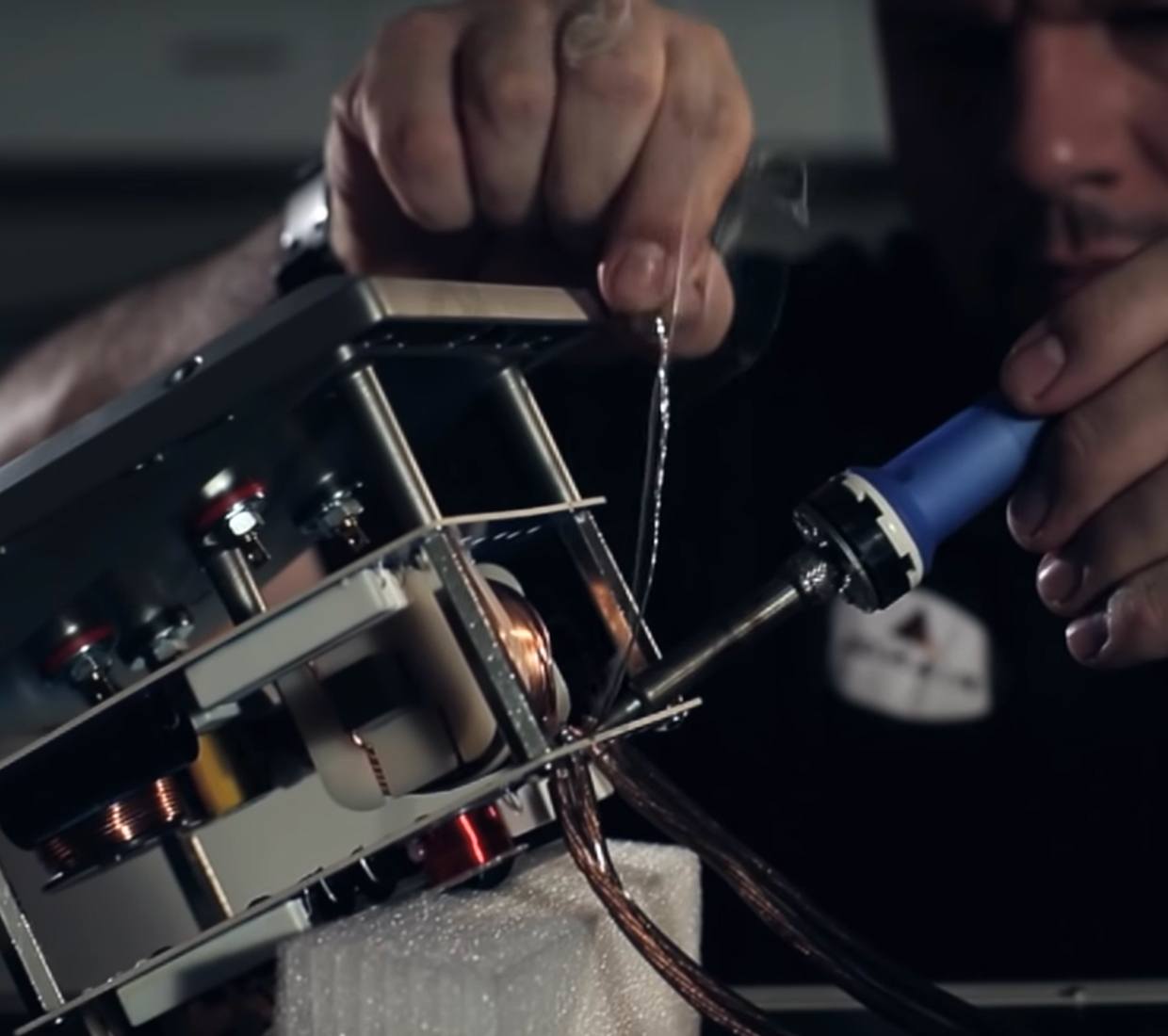 Crossover
Crossover
The Duetto crossover uses very steep cut-off slopes (up to 24dB/octave) that, in combination with the natural driver cut-off slopes, are said to result in excellent phase behavior. Designing drivers in-house allows Triangle to adjust/optimize the electrical parameters to blend seamlessly with the crossover design. Moreover, computer optimization is used to modify the speaker' natural frequency responses, optimizing them with the filter's transfer function. All 40th edition crossovers are assembled in-house and use high audio quality components selected after long hours of listening:
o French MKP capacitors developed in collaboration with the company SCR AUDIO
o cement resistances with low induction effect
o large air core inductors.
Developed in partnership with Audioquest, the internal cabling uses a blend of Long Grain Copper (LGC) and High Purity Perfect-Surface Copper (PSC), improving clarity. LGC contains fewer oxides in the conductive material than standard OFHC copper.
The rear connection terminal is made of die-cast aluminum with four pure copper terminals and bi-wire jumpers, all gold-plated.
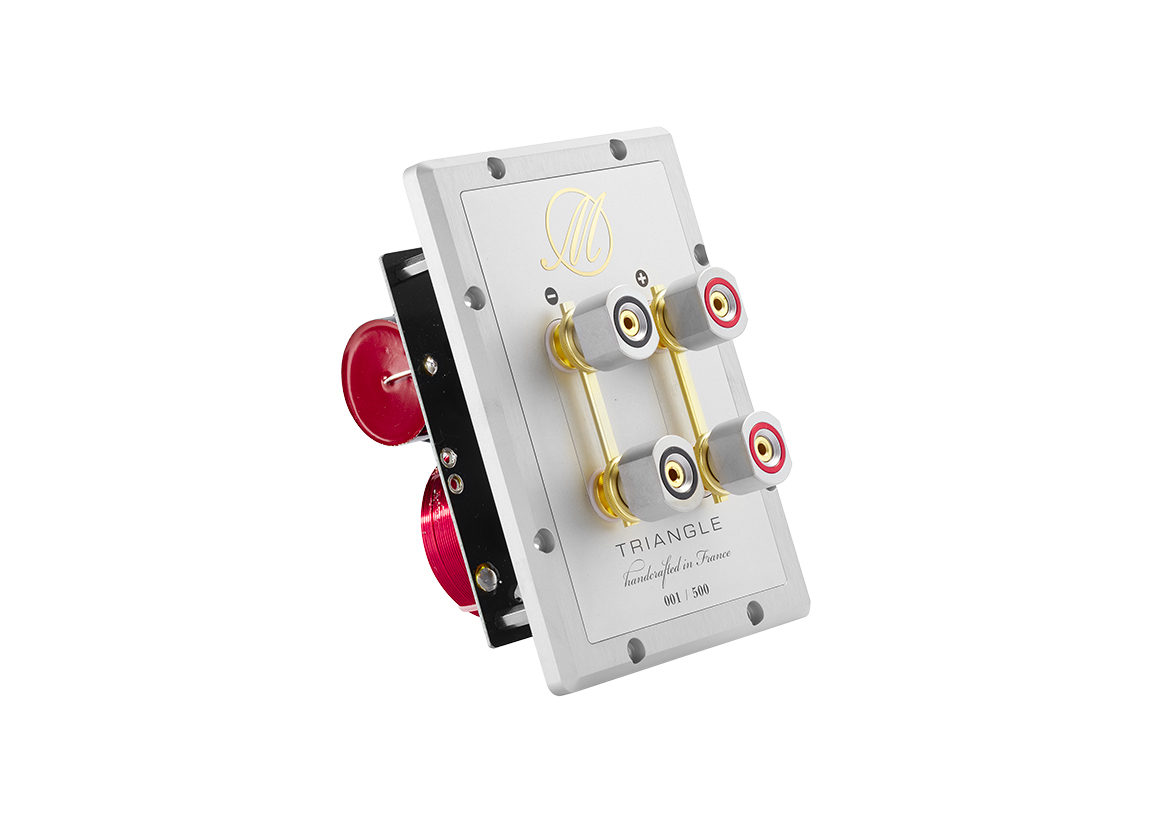 Cabinet
Cabinet
The Magellan Series cabinets, crafted in Europe, feature seven layers of 3mm HDF (High-Density Fiberboard). The cabinet sides/layers are shaped under pressure for several weeks to achieve the desired shape while maintaining rigidity. The side curve is intentionally designed to prevent standing waves by avoiding internal parallelism. Internal bracing added to the high-density structure helps considerably to reduce "box talk."
Triangle offers cabinetry finished in elegant species of precious wood, carefully sorted and assembled according to grain, with multiple layers of varnish applied to ensure a luxurious finish.
I was given the opportunity to review the Shadow Zebrano version and I must say, it is stunning. The finishing is flawless, and its unique grain pattern subtly fades to black towards the back of the speaker, a finishing technique I have not previously seen. It not only looks beautiful, but it also creates an illusion of smaller size.
Seasoned visitors to my listening room were, to a person, gobsmacked by the speaker's beauty, fit, and finish.
Put it All Together, and What Do You Have?
For this review, I primarily used the Electrocompaniet ECI 6 Dx MKII Integrated amplifier and streamer, which has a power output of 125 watts per channel, and proved to be an excellent match.
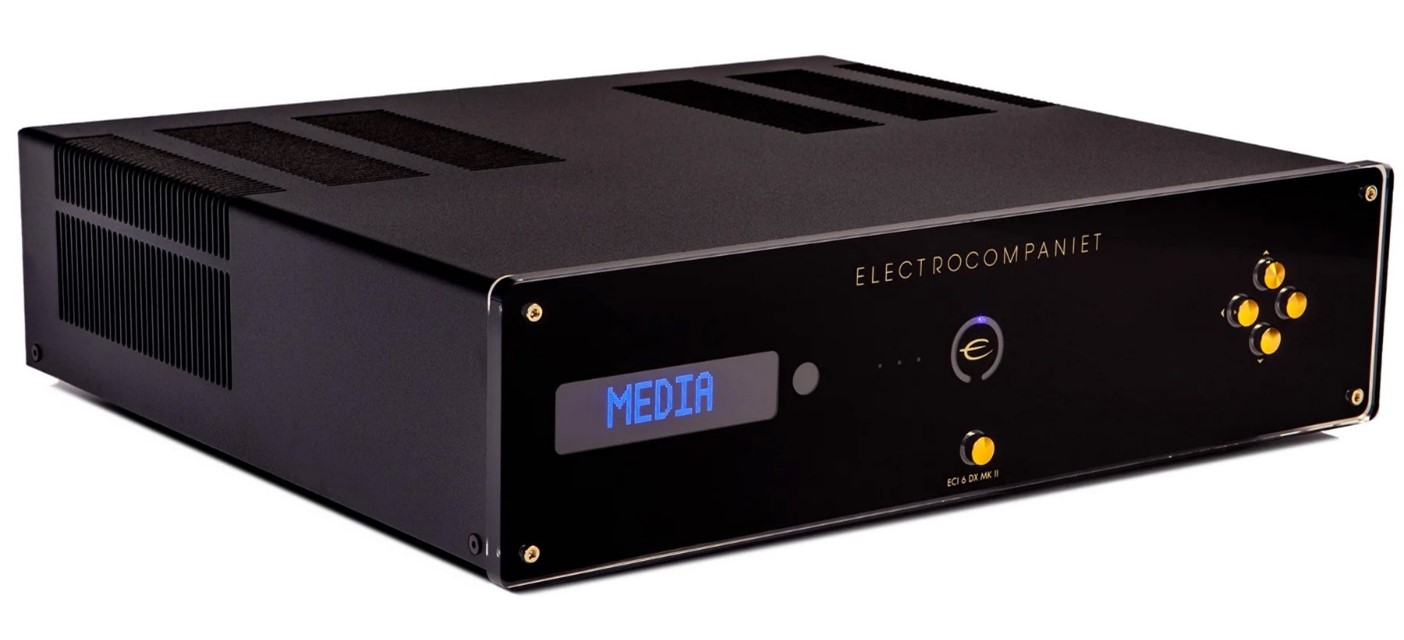
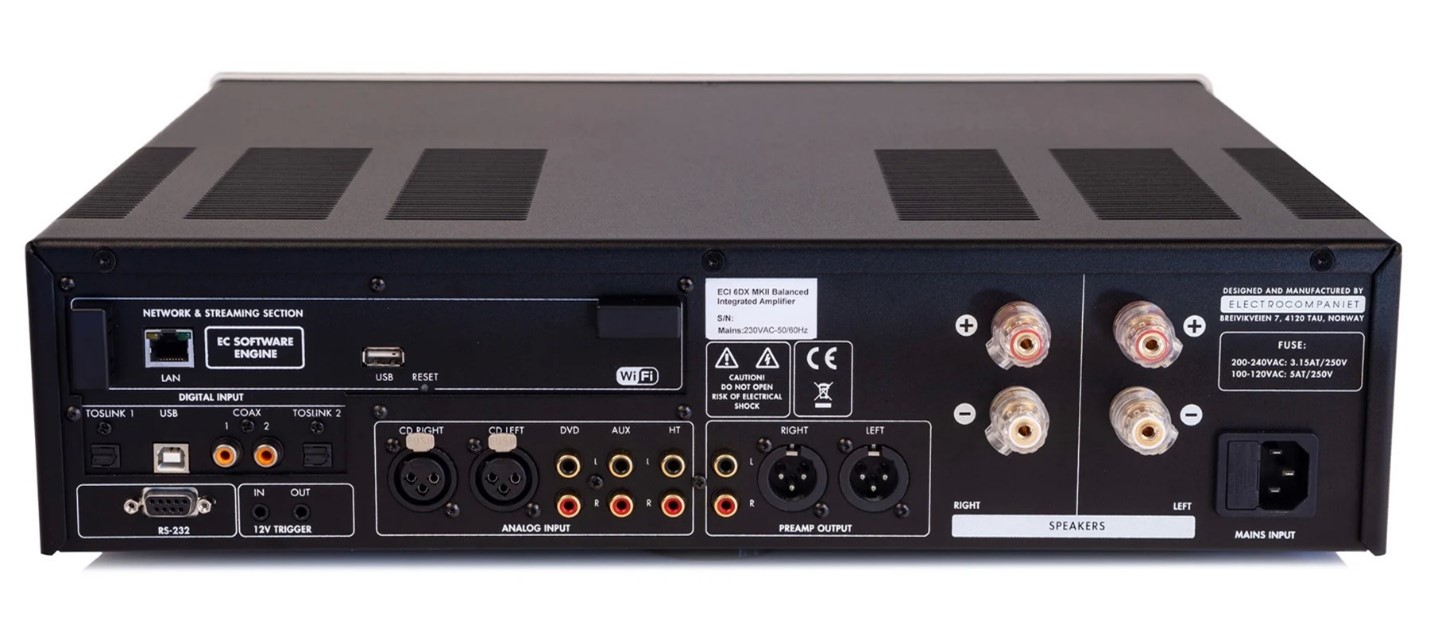 The ECI 6 Dx MkII Integrated amp, Streamer, DAC $7500.00
The ECI 6 Dx MkII Integrated amp, Streamer, DAC $7500.00
I was an Electrocompaniet dealer in 1978 and had fond memories of the sound that the Pre One preamp and Ampliwire amplifier produced, which was, at the time, a breakthrough in solid-state reproduction. Sweet, sublime, and expressive were my memories of those products.
I was delighted to learn that Frank Gazzo and Antal Audio Group are now the new US distributor of Electrocompaniet. Frank's involvement in reintroducing Electrocompaniet to the US market will be a significant plus for the company and customers alike. Frank offered me the opportunity to try out the Electrocompaniet Integrated/DAC/Streamer in combination with the Triangle Duetto 40th speakers, which would create a likely home audio system. I was interested in the idea, so he sent me an ECI 6 Dx MkII integrated amplifier to use with the Duetto speakers.
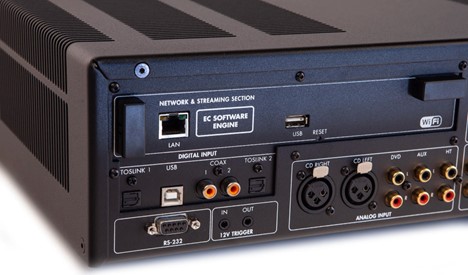 While this is not meant to be a review of this component, I wanted to give the readers a bit of its background so I asked Lasse Danielson of Electrocompaniet in Norway for technical info on the ECI 6 Dx MKII.
While this is not meant to be a review of this component, I wanted to give the readers a bit of its background so I asked Lasse Danielson of Electrocompaniet in Norway for technical info on the ECI 6 Dx MKII.
He sent over the following:
"Preamp: The preamp stages on all Electrocompaniet products are discrete, fully balanced designs, and run in pure class A up to the output stages, which run in Class A/B.
Amp stage: We use amplifier stages designed with Electrocompaniet classic circuitry design methodology where transistors are operated in high bias class A with low distortion and low noise.
The power amplifiers feature a high open loop bandwidth design using circuitry that at the same time preserves and takes full advantage of the modest applied negative feedback, resulting in low distortion across the full audio frequency band with very good bass control and a very smooth top end. We use a fully discrete design with no op-amps in the audio signal path.
Power supply : We use a 650VA shielded toroidal transformer with seven secondary coils, 88800uF capacitors, and all line stages have separately filtered and regulated rails for each channel with very little output noise. We have 16 different voltage-regulated circuits for the amplifier and another ten regulated power circuits for additional circuits, like digital converting, streaming, controlling, etc. Our PCB is produced with 2oz copper traces for improved current handling.
DAC section: We use a precision clock source in combination with a Texas Instrument 4392 sample rate converter with a Cirrus logic 4398. These chips are widely used in products performing A/D-D/A conversion in high-end recording studios. For example - Prism Sound from the UK's products.
More important than the chip itself, is the analog circuitry used AFTER the Digital to Analog conversion. All our pre-amplifiers and output circuits, for example, in CD players, streamers, and the like, as well as integrated and power amps, are a fully balanced design. It's one part of our design philosophy that transistors in these circuits work on high-class A operating points. The emphasis on the analog side (which is what we hear) is our primary concern and listening test have confirmed our assumptions in this matter.
I'd like to point out that all our products are fully designed, manufactured, assembled, and shipped from our factory in Norway. Everything from the electronics (that we manufacture ourselves) to the chassis and transformers (and everything else) is sourced locally (where possible). At Electrocompaniet, we make our own streaming software and apps."
I can tell you that after being enamored by the impressive quality of sound produced by this integrated amp, I plan to conduct a thorough exploration of their separate two-channel offerings in 2024, which will include their preamp and their new monoblocs…. Stay tuned.
I used my Innuos Zenith MkIII and Phoenix USB for digital playback and my usual analog setup, which includes an AMG Viella V12JT/Benz LP-S cartridge and a Tom Evans Groove Plus SRX Mk2.5 phono stage. The speakers were positioned on stands and initially set up in my usual starting position in my listening room, about 40 inches from the front wall and 7.5 feet apart. I typically sit 9 feet back. At first, I had them facing directly forward, but I quickly realized they needed a bit of toe to bring up a sense of openness and increase the focus of the vocals. Eventually, I settled on about 15 degrees of toe-in and 8 feet apart and 34 inches from the front wall, giving me the depth, airy openness to the soundstage, and resolution I sought.
I received brand new speakers, which Frank advised me would need approximately 100-200 hours of break-in before critical listening should start. How right he was! The upper treble sounded pinched out of the box, and the bass lacked body. However, these issues were significantly reduced after 100 hours and gone after 200 hours. If auditioning, be sure you are listening to a pair that has at least 200 hours on them.
Overall Sound
This speaker builds its sound profile from its impressive midrange to the extremes.
When testing a speaker, I immediately like to push the upper midrange and lower treble to their limits since they're crucial areas for me. It is a non-starter for me if the speaker produces any texture, grain, or sounds strained in this range. Additionally, I expect the midrange to transition to the tweeter smoothly and seamlessly. For this test, I like to use vocals that are on the edge of being too energetic and can cause issues in the crossover region but, if reproduced correctly, can yield a full-bodied sound.
 Steven Rodriguez's The Devil Wears Lace
Steven Rodriguez's The Devil Wears Lace
Vocals such as Steven Rodriguez's The Devil Wears Lace, E.C. Scott's Sugar on the Floor, or David Gray's As I'm Leaving can quickly reveal the energy level in the crucial region. No "audiophile dribble" during this testing. The last thing I want in a speaker is one that sounds wonderful on great recording but can't allow me to enjoy "normal" music.
I can report that the Duetto navigated this obstacle course with an ease I have not often experienced, exposing the detail and edge of these vocals with zero grain, without sounding forward or "edgy" and exhibited the body of the different vocals I know resides in the recording.
Further listening to many of the audiophile standards I am, unfortunately, way too familiar with quickly revealed that the Duetto could convey the "humanity" of vocal performance and display intricate details in tone and micro dynamics in a way that contributed to the emotional impact of the music. Artists such as Nora Jones, Holly Cole, Sara K, Patricia Barber, and Harry Belafonte were brought to life with sublime naturalness, exposing delicate layers of emotion that poured through every note.
Although the midrange is undeniably the "star of the show" I feel tweeter and its seamless integration with the midrange is the real hero of this design. It has exceptional clarity and a notable sweetness and extension. The intricate details it provides do not detract from the overall sound but enhance it. It simply reveals more information in quantity, not in emphasis. In many other speakers, the tweeter tends to draw attention to itself, sounding as if it is an independent entity in terms of timing, amplitude, or both. However, in this speaker, the detail is integrated in a way that contributes fully and naturally to the emotion of the music and/or the vocal without becoming the point of it.
Triangle's in-house driver design and manufacturing capability give them a real advantage in fine-tuning the final sound quality . However, more than engineering is needed to achieve the outcome that I am hearing. In this Triangle speaker, we have a unique blend of engineering and art working together harmoniously to achieve the higher goal of an emotional connection to the music.
If the midrange is the main attraction and the tweeter is the hero, then the bass must be considered the surprise. I must confess that I am a die-hard fan of full-range loudspeakers, and I was expecting to be disappointed with the bass when I started this review, simply due to the size of the speaker. However, I was pleasantly surprised, if not frankly impressed, by the quality and quantity of the bass response. Rated down to 38Hz, the bass proved satisfactory for all acoustic instruments except for the lower organ notes. Tracks from Marcus Miller and Stanley Clarke proved very enjoyable with speed, detail, tone, and power.
As a measure of a speaker's bass quality, I often use a bass guitar recording. Having grown up in New Orleans, I had the good fortune of listening to the music of the Meters and George Porter Jr., who created the funky foundation for their great music.
When George Porter Jr. plays bass with deep notes and "slaps," it demands a set of qualities that push nay loudspeaker, but particularly a book shelf design. It requires speed, transient accuracy, and deep bass with overtones and as the bass line becomes more complex and demanding, many speakers struggle. However, I am happy to report that the Duetto speaker handled this test easily and without difficulty maintaining clarity and speed and not "tripping over itself."
Here is a link to a video of George running through some stuff and getting going at about 2:30 into the video.
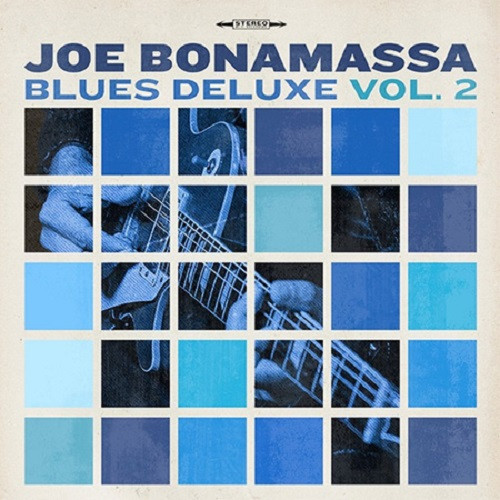 Joe Bonamassa's recent song, "Is it Safe to Go Home," is a powerful ballad with excellent guitar work meant to be played loud and fill a room. Despite its small size, the speaker could reproduce the song with impressive size and room-filling power. While the female background vocals can be irritating on many speakers, they were well controlled through the Duetto. It is quite a daunting task for a speaker of this size to attempt to play something of this scale, but the Duetto performed admirably, throwing a large soundstage and, frankly, surprisingly deep, solid bass response. Color me impressed.
Joe Bonamassa's recent song, "Is it Safe to Go Home," is a powerful ballad with excellent guitar work meant to be played loud and fill a room. Despite its small size, the speaker could reproduce the song with impressive size and room-filling power. While the female background vocals can be irritating on many speakers, they were well controlled through the Duetto. It is quite a daunting task for a speaker of this size to attempt to play something of this scale, but the Duetto performed admirably, throwing a large soundstage and, frankly, surprisingly deep, solid bass response. Color me impressed.
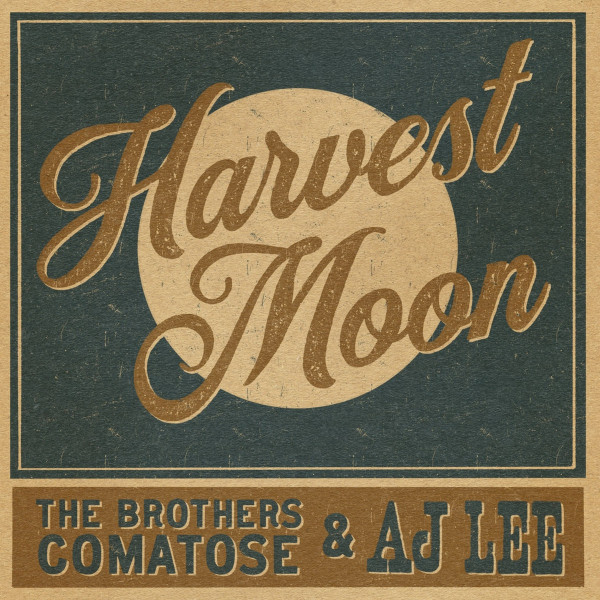 This recording of Harvest Moon by the Brothers Comatose (love that name!), featuring the angelic voice of AJ Lee, who also plays the mandolin, showcases the excellent properties of the Duetto. For all you Allison Krauss fans out there, take note of this singer. AJ's voice is rendered with delicacy and subtle inflection that hooks you from the start. The body of the mandolin and the transient plucks are fully exposed for your enjoyment and will get you toe-tapping. I find this to be a heart-touching rendition of this song.
This recording of Harvest Moon by the Brothers Comatose (love that name!), featuring the angelic voice of AJ Lee, who also plays the mandolin, showcases the excellent properties of the Duetto. For all you Allison Krauss fans out there, take note of this singer. AJ's voice is rendered with delicacy and subtle inflection that hooks you from the start. The body of the mandolin and the transient plucks are fully exposed for your enjoyment and will get you toe-tapping. I find this to be a heart-touching rendition of this song.
In the middle of the song, the harmony of AJ and the Brothers provides a platform for the Duettos to strut their stuff and unravel each singer's contribution. The imaging and placement of the singers are excellent, with one on the left, one on the right, and the bass player at the back left. The driver integration is superb, resulting in a wide sweet spot that exposes all the subtle vocal components of the harmony. Both the artist and the speaker do an excellent job in this regard.
Here is the link to the youtube video of the recording where you can see how they are positioned, how AJ Lee works back and forth from the microphone and see how it compares to your system's recreation. You can find the track on Qobuz.
Last Word
During my two-month experience with these speakers, I found myself repeatedly drawn to listening to familiar pieces and discovering subtleties previously unheard in that music. The engineers at Triangle have done an outstanding job with these speakers, designed as a tribute to the company's 40th anniversary. I believe this product will mark another high point in its continuing history.
Although not cheap, at its price point the Duetto 40th offers excellent build quality, flawless finishing, and engaging performance, especially in the inflation-distorted environment in which we now reside.
Yes … several floor-standing solutions are available in this price range, but they may not be feasible for some users. If your audio needs have led you to consider a bookshelf speaker solution due to room size, aesthetics, respect for your neighbor in the next apartment, or continued compatibility with a significant other, I can unconditionally recommend you put Triangle speakers on your list to audition. This speaker possesses a naturalness, subtlety, and communicativeness that eludes many and provides a gratifying listening experience that allows you to listen for long periods of time without any sense of fatigue.
As for my full-range addiction…. based on the sound I have experienced from the Duetto's, I'll pick up my coconuts, continue my quest, and check out the full-range floor standing version of the Magellan 40th offerings.
Like I said earlier… these guys are doing something right.
Specifications
Price: $7000.00 pair
Stands: $1200.00 pair
Number of drivers 2
Number of ways 2
Tweeter TZ2900PM-MG
Midrange T16GM-MT10-GC1-V2
Sensitivity 88 dB/W/m
Frequency range 38 Hz – 30 kHz (+/- 3 dB)
Amplifier power output (w) 30-150 W
Repetitive peak power 160 W
Treble cutoff frequency 3.1 (24dB/Oct)
Nominal impedance 8 Ω
Minimum impedance 4.6 Ω
High frequency roll-off 2800 (24dB/Oct)
Dimensions w x d x h 9.9 x 13.7 x 18.1 inch
Dimensions (spikes) w x d x h 9.9 x 13.7 x 18.9 inch
Weight 37 lbs
Electrocompaniet ECI 6 Dx MKII specifications
All measurements are made at 120V / 240V //50Hz / 60Hz
Digital section:
D/A converter
24-bit/192 kHz
Sample rate converter
24bit / 192kHz
Inputs
SPDIF, 2x Toslink, 1x USB
USB: asynchronous up to 24bit/ 192kHz supported
SPDIF: 24bit/ 192kHz
Toslink: 24bit/ 96kHz
Streamer section
• Advanced 802.11 AC WiFi with MIMO
• 1x Gigabit Ethernet (1000Mbps)
• 1x USB for external storage
• iOS, Android, and web app
Streaming services
• AirPlay ®
• AirPlay 2 ®*
• Spotify ® Connect
• Qobuz ®
• TIDAL ®
• TIDAL ® Connect
• Roon Ready
• DLNA
• Internet Radio
• Bluetooth streaming from any Bluetooth-enabled device
* Future software update.
Supported formats:
• All popular formats including: WAV/WAVE, MP3, AAC+, Vorbis, ALAC, FLAC, APE, WMA, up to 192kHZ/24bit, DSD, up to DSD 128 (5.6 MHz)
Preamplifier section
Input impedance
( Balanced input )
47Kohm
Maximum input level
10 Volt RMS
Noise floor
( 1Vrms, 20 - 20 kHz, balanced)
-135 dB
THD + N
(1Vrms, 20 - 20 kHz, balanced)
<0.004%
Gain (Balanced)
0 dB
Amplifier section
Output Impedance
< 0,02 Ohm
Frequency response
1 – 150 kHz
Channel separation
> 120 dB
THD ( 20 - 20 kHz)
< 0.004%
Maximum peak current
>100A
Damping factor 8 ohm load
>350
Input sensitivity 120W output
1.3Vrms
Input sensitivity HT 120W output
1Vrms
Gain HT Input
x36 (31 dB)
Rated output power
8 ohms 2 x 125 W
4 ohms 2 x 200 W
2 ohms 2 x 370 W
Power consumption
110 W
Standby
1W
Dimensions
Width
470 mm / 18.3 inches
Depth ( with a speaker terminals)
430 mm / 16.9 inches
Height
128 mm / 5 inches
Weight
20,5 Kg / 45 lbs.
Manufacturer Information
American importer:
32 Dix Avenue
Glens Falls ,NY 12801
www.antalaudio.com
Frank Gazzo
frankgazzo@antalaudio.com


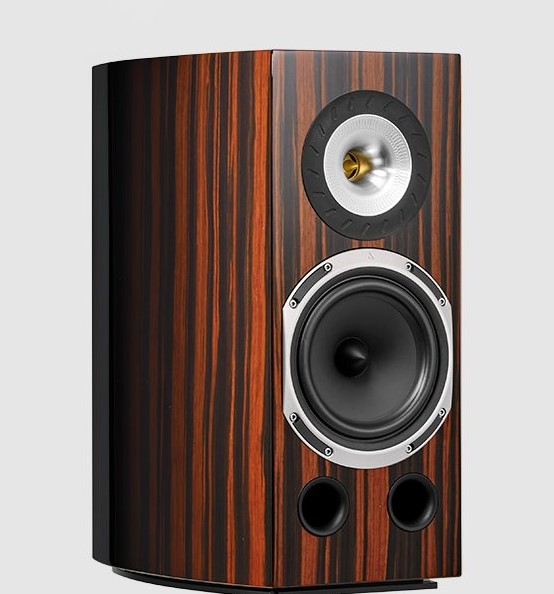






































.png)








